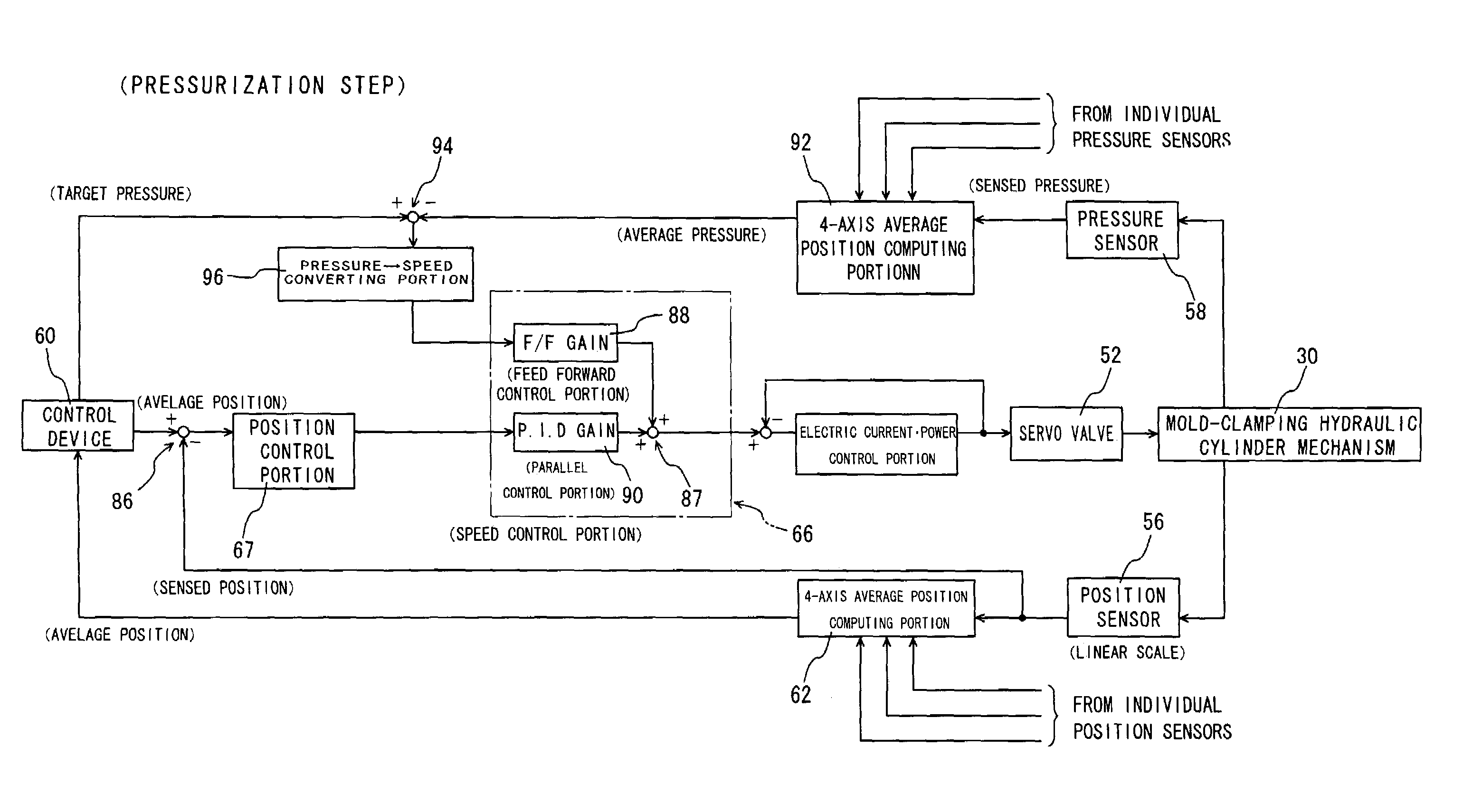Compression molding method and mold clamping apparatus
a clamping apparatus and compression molding technology, applied in auxillary shaping apparatus, manufacturing tools, applications, etc., can solve the problems of difficult to achieve consistent clamping pressure, difficult to precisely control the mold, and reduced molding dimensional accuracy and molding defects, etc., to achieve stable injection press molding, small fluctuations, and high degree of precision
- Summary
- Abstract
- Description
- Claims
- Application Information
AI Technical Summary
Benefits of technology
Problems solved by technology
Method used
Image
Examples
Embodiment Construction
[0039]Referring first to FIG. 1, there is shown a schematic diagram of a mold clamping apparatus 10 constructed according to one preferred embodiment of the invention, which is suitable for implementing a compression molding method according to the invention. This mold clamping apparatus 10 comprises a stationary plate 12 fixedly supported by means of an apparatus base (not shown) and a movable plate 14 positioned opposed to this stationary plate 12, with the movable plate 14 capable of relative displacement towards and away from the stationary plate 12. A stationary mold half 16 and a movable mold half 18, which cooperate to constitute a mold, are respectively attached to opposed faces of the stationary and movable plates 12, 14. This movable plate 14 is moved toward and away from the stationary plate 12 so that the stationary and movable mold halves 16, 18 are caused to undergo a mold closing or mold parting operation to be placed in a mold closing position or mold parting positio...
PUM
| Property | Measurement | Unit |
|---|---|---|
| clamping force | aaaaa | aaaaa |
| mold clamping forces | aaaaa | aaaaa |
| mold clamping force | aaaaa | aaaaa |
Abstract
Description
Claims
Application Information
 Login to View More
Login to View More - R&D
- Intellectual Property
- Life Sciences
- Materials
- Tech Scout
- Unparalleled Data Quality
- Higher Quality Content
- 60% Fewer Hallucinations
Browse by: Latest US Patents, China's latest patents, Technical Efficacy Thesaurus, Application Domain, Technology Topic, Popular Technical Reports.
© 2025 PatSnap. All rights reserved.Legal|Privacy policy|Modern Slavery Act Transparency Statement|Sitemap|About US| Contact US: help@patsnap.com



